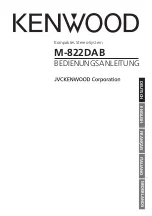
SYSTEM DESCRIPTION, INSTALLATION, AND MAINTENANCE MANUAL
MCS--4200/7200 Multi--Channel SATCOM System
23--20--35
15 Jul 2006
Honeywell International Inc. Do not copy without express permission of Honeywell.
Page 6--74
(c) Line 5 and, if applicable, line 9 display the universal time coordinated (UTC)
beginning in column 1, and ATA beginning in column 6, and the class number in
column 23.
(d) The UTC is displayed as hhmm, where hh represents the UTC hours from 00 to
23, and mm represents the UTC minutes from 00 to 59. The UTC is the time of
the failure reporting as stored in the SDU system failure memory log. Dashes are
displayed if no valid UTC data is available.
(e) The ATA number is displayed as aaaaaa, where aaaaaa represents the ATA
reference number of the reported failure as specified in paragraph 3.E. for each
type of CFDS. For CFDS type none, no ATA number is displayed.
(f)
The class number is displayed as c, where c represents the class (1 or 2) of the
failure.
(9) PREVIOUS LEGS REPORT Page
(a) Access to this page is from the SAT--N (i.e., SATCOM MAINTENANCE) page.
The purpose of this page is to display Class 1 and 2, Level 1 diagnosed, failures
reported during previous legs. See Figure 6-11 for example pages.
(b) The Previous Leg Report lists two failures per page if a failure was present
during the previous leg. These two sets of lines display Class 1 and 2, Level 1
diagnosed, last leg failures. Failures within each flight leg are displayed in
chronological order (i.e., the most recent detected failure last) with no more than
two failures displayed per page. However, the flight leg display is in reverse
chronological order (i.e., flights go back in time while failures for each individual
flight go forward in time).
(c) The number of PREVIOUS LEGS REPORT pages depends on the number of
failures to report (up to a maximum of 99 pages). If there are no failures to
report, lines 6, 7, 9, 10, and 11 are blank. Line 5 displays NO FAULT DETECTED
beginning in column 4 if there are no failures to report.
(d) Failures from different flight legs with the same aircraft identification are mixed on
the same page. When the last leg falls in lines 5, 6, and 7, failures from the
previous flight leg are displayed on the same page in lines 9, 10, and 11.
(e) When the given flight leg has a different aircraft identification recorded than the
flight leg before it, the failure display begins in lines 5, 6, and 7 on the next page
of the multiple page sequence. When there are no failures to report for a given
flight leg, nothing is reported for that flight leg (i.e., the flight leg is skipped).
















































